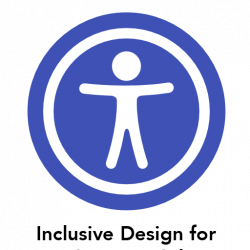
Shame: what does it have to do with Binge Eating Disorder (BED)?
Overcoming shame is an important part of the Binge Eating Disorder (BED) recovery process.
Current research reveals new layers of understanding about the interconnections of the brain, the gut, and the urges entangled within both.
What is Binge Eating Disorder (BED)?
Binge eating is defined as consuming food well past the point of fullness in one sitting and doing this frequently to the point of feeling out of control. BED is the most common eating disorder in the United States and one of the more recently recognized eating disorders in the DSM-5. It is characterized by recurrent episodes of binge eating. BED is life-threatening but treatable.
Other signs of BED include:
- Eating when you feel full or an inability to stop eating when full
- Eating normally in the presence of others but binging when isolated
- Feelings of numbness or lack of sensation while binge eating
- Feelings of shame or self-hate after binge episodes
- Stockpiling food to consume when alone
- Experiencing the feeling of stress or anxiety that can only be relieved by eating
- Never feeling satisfied when eating, no matter the amount of food consumed
- Frequent dieting, with or without weight loss
The problem with shame and BED
Similar to individuals struggling with substance abuse, people with Binge Eating Disorder (BED) live in a painful cycle of shame and compulsive eating behaviors that will likely continue until that individual receives binge eating disorder treatment. But unlike drugs and alcohol, food is obviously not something that can be avoided. In order to heal from BED or any eating disorder for that matter, one’s relationship with food must be repaired.
Shame, research, and hope
Current research reveals new layers of understanding about the interconnectedness of the brain, the gut, and the urges entangled within both. The brain has a hard time creating new pathways- and therefore inhibited in creating new habits, perceptions, and behaviors- when flooded by the strong emotions triggered by shame and hopelessness.
Consider a natural disaster like flooding and the impact that flood gates can have on protecting the land and community. These flood gates, built over time as a counter-response to repeated flood patterns, hold back the rush of water and open opportunities for the community to take different routes to safety. Likewise, when the brain is flooded under a swell of emotions, it is challenging to interrupt, slow down, or even see another way out of the familiar binge/restrict cycle. However, if that same cycle is slowed down by a “flood gate” and the brain can then emotionally engage in a new way within a safe space, a fresh pathway begins to develop and alternatively create new patterns that strengthen recovery and gradually restore trust in the fuel gauge signals.
When the shame and judgment surrounding binge urge cycles are disrupted simultaneously, the body can learn to embrace both physical and emotional hunger as equally powerful opportunities to write another healing chapter in the recovery journey.
Willpower is not enough
Even when one’s desire to recover is strong, it can be challenging to get the body and brain to stop resisting the healing process. Despite progress, each repeated behavior increases feelings of shame and hopelessness that things can or will ever change. Hunger and fullness signals, the body’s built-in fuel gauge, no longer seem to communicate correctly or effectively. Science has told us that an eating disorder can distort and confuse the brain and the stomach’s ability to translate hunger and fullness messages. But the good news is, it also tells us that as the brain and stomach heal, the body can relearn how to hear and trust those messages!
Breaking the shame-binge cycle
Understanding the physiological changes created by the binge cycle itself, and its influence on the inevitable emotional cycle that follows, is a good starting place for creating new brain pathways. The single most pervasive trigger that intersects all physiological and emotional responses to the binge cycle is shame. Therefore, the most important objective is to begin seeing hunger and fullness signals, or lack thereof, through a lens of self-compassion and objectivity. How is this possible?
What science tells us
One must begin by making sense of the science occurring within the body. Understanding the physiological responses that can occur both before, during and after a binge helps reduce the “surprise factor”, begin a neutral and renewing conversation with the body, and open the door to curiosity instead of judgment.
There are many hormones and neurotransmitters that carry messages back and forth between the brain and gut. One that directly affects the binge/restrict cycle is dopamine. Dopamine, a hormone released in response to pleasure received from activities like eating, is associated with reward. Evidence supports that the brain begins automating its response to a behavior if it is repeated, or “rewarded,” often. If the mind can predict a reward, it can respond to the dopamine trigger in the presence of or by merely seeing the binge foods.
Evidence also suggests that brain reward circuitry is more active in hungry subjects when sugary foods are consumed vs. in subjects who are satisfied and not hungry. The key message to embrace in the early stages of breaking the binge cycle’s hold on the brain is two-fold:
- Awareness of this “automated” response to binge foods as physiologically “learned” and one that can be “un-learned” over time reduces the shame triggered by assumptions that willpower has failed, and
- Periods of restriction as “punishment” for a binge can lower blood sugar levels and subsequently increase the desire for quick-energy binge foods in a hungry state.
Knowing these inevitable, learned physiological responses ahead of time removes the “surprise factor” when experiencing them and helps reduce shame triggers sparked by feelings of body betrayal and “failed willpower.” Just as these patterns have been learned by the brain, new pathways can also be learned. Understanding these hormonal influences is one of the flood gates that can hold back the emotional deluge and allow space and time for new thoughts and patterns to develop.
Reconnect to hunger and fullness
With practice, these steps act as flood gates holding back the force of emotional overflow to allow a safe space for new pathways to develop. Science tells us that the ability to rely on and commit to consistent meal timing can act as a “flood gate” that slows emotional flooding and opens up new brain pathways. This flood gate can be defined by a breakfast meal within a few hours of rising and from that point forward, consuming food every 3 to 4 hours as you give your body a chance to restore its own appetite signals.
In the early stages, the hunger and fullness signals remain distorted and most likely will not coincide with the timing of your meals and snacks. However, staying consistent with this meal timing flood gate allows space for the body, brain, and gut to heal and new pathways to be created. Like syncing your meals and snacks with a new time zone when flying to another country, even if not experiencing hunger cues that match, the body can readjust its hunger and fullness to these new patterns.
Food as fuel
Saying “fuel” in place of “food” is a conscious choice that also serves as a flood gate to hold back the emotional meanings attached to food created by disordered eating thoughts and beliefs. Fuel implies a more neutral and active purpose that can help diffuse anxiety and fear often triggered by the word “food.” Even if for a moment, reducing negative emotions by changing the language used can be a powerful tool that strengthens the new brain pathway. Every time “fuel” is used, the flood gate holds a little longer, and the safe space can be explored a little more in-depth. The fuel choices made for each meal and snack are uniquely varied for each person and offer opportunities to experiment with how different combinations of fuel choices feel on a physical and emotional level.
This requires permission to choose and consume a variety of fuels in a variety of combinations. Permission embraces curiosity, not perfection. Staying curious about how different choices feel in your body, sustain your energy, and change your moods broadens the definition of balance. Therefore, balance is not only in the tangible fuel choices but also the intangible emotions and judgment around eating itself. The flood gate of fuel balance offers unlimited opportunities to hold back the emotional flooding with each different combination and try out the new pathways that are beginning to develop.
Fuel balance naturally leads to repetition
It is the repetition of meal timing and fuel balance, growing from an attitude of curious permission before, during, and after eating, that strengthens the flood gates to hold on a little longer each time. A consistently fueled body is not nearly as vulnerable to physiological triggers. When physical cravings are reduced, emotional triggers are more clearly recognized. These emotional cravings do not have to open the gates and release the emotional flooding, nor do they represent a failure to create new brain pathways. In fact, these same emotional cravings can support new pathways when used as opportunities to practice curiosity and embrace self-compassion for what is needed in that very moment.
Emotional cravings are as real as physical cravings, and the healing comes in being able to differentiate the two and learn from both equally, without shame as both can and need to be embraced in recovery. Over time, the brain is emotionally engaged in a healing way as the new focus and patterns are held more frequently and for longer periods. This new pathway can strengthen recovery as the urge to binge gradually lessens and trust in both food and body is gradually restored.
Our Recommended Articles
Start the road to recovery with Alsana.






